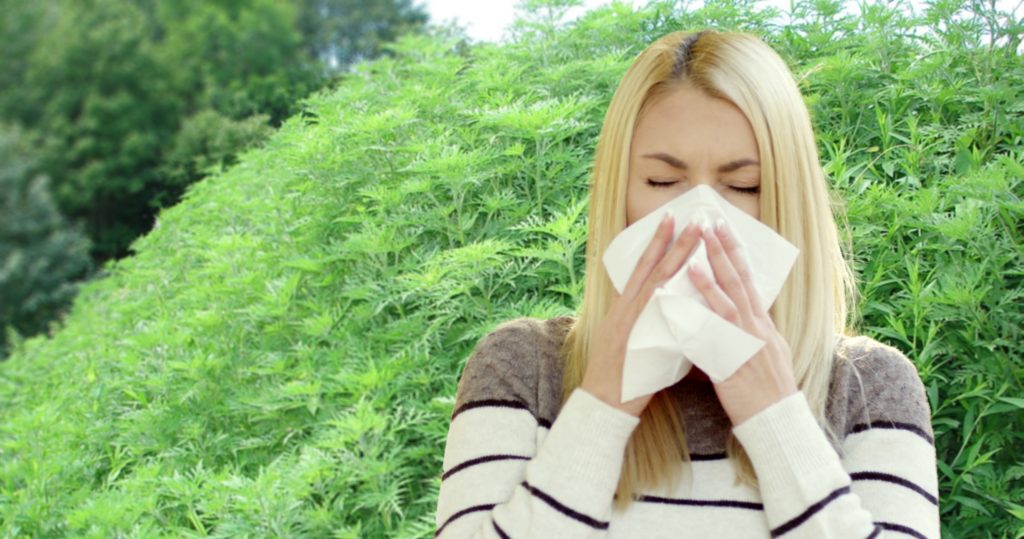
Ongoing research to find a biological control to help millions of allergy sufferers blighted by common ragweed (Ambrosia artemisiifolia) is gaining momentum with the heat being turned up on the prospect of a humble bug – the leaf beetle (Ophraella communa) – presenting itself as a successful foe to reduce harmful ragweed pollen.
Twenty-five percent of people in Europe suffer from hay fever and other symptoms of pollen from common ragweed, including itchy eyes and sneezing, and it also aggravates existing medical conditions such as asthma and eczema. Where ragweed grows, 10–60% of people exposed to its pollen develop some form of allergic reaction costing the European economy €4.5 billion a year.
PhD student Benno Augustinus and Yan Sun, former PhD student at CABI, supervised by CABI’s Dr Urs Schaffner, have just led research – published in Ecological Applications – which looked at how the climate variables temperature and relative humidity might impact the leaf beetle’s ability to thrive and fight the flowering of ragweed in Europe.
Specifically, Benno and the other researchers, that also included Professor Heinz Müller-Schärer of the University of Fribourg, used field and laboratory experiments to collect data on the climate-dependent parameters assumed to be most relevant for populations of the leaf beetle to grow.

They considered how temperature drives the number of generations per year and the extent to which relative humidity determines the success of egg hatching of the leaf beetle. Benno and the team found that the leaf beetle completed one generation in 334 cumulative degree days and that egg hatching success strongly decreased from 80 percent to 20 percent when relative humidity falls from 55 percent to 45 percent.
Benno said, “Species distribution models can predict the suitable climatic range of a potential biological control agent but they provide little information on its potential impact.
“We used temperature and relative humidity to project population densities across the European range that is suitable for both ragweed and the leaf beetle and found that the present distribution of the beetle in Europe is within range with the highest projected population growth.
“The highest population density of the leaf beetle was predicted for northern Italy and parts of western Russia and western Georgia.”

The researchers revealed that in the Milan area of Italy field observations of the leaf beetle’s impact upon common ragweed was an 80 percent aerial pollen reduction – which is in line with their predictions.
Benno added, “We show that in large parts of the suitable range of O. communa, relative humidity is at least as important as temperature for potential population increase and therefore impact on common ragweed.
“We propose that the combined statistical and mechanistic approach outlined in our paper helps to more accurately predict the potential impact of a weed biological control agent than a species distribution model alone.
“Identifying the factors limiting the population build up of a biological control agent across the suitable range allows for the implementation of a more targeted release and management strategies to optimize biocontrol efficacy.”
The issue of invasive weed species in Europe is becoming ever more prescient due to a variety of factors including climate change and increased pathways for species introduction through international trade and travel.
In August 2018, some of the world’s leading scientists debated how best to tackle invasive weed species at the XV International Symposium on Biological Control of Weeds in Engelberg, Switzerland, co-organised by CABI and the University of Fribourg.
Additional information
Full paper reference
Augustinus, B., Sun, Y., Beuchat, C., Schaffner, U and Müller-Schärer, H., ‘Predicting impact of a biocontrol agent: integrating distribution modelling with climate-dependent vital rates,’ Ecological Applications, September 2019, DOI:10.1002/eap.2003
See in this video how ragweed allergy has residents in Philadelphia, USA, in a tizz.
